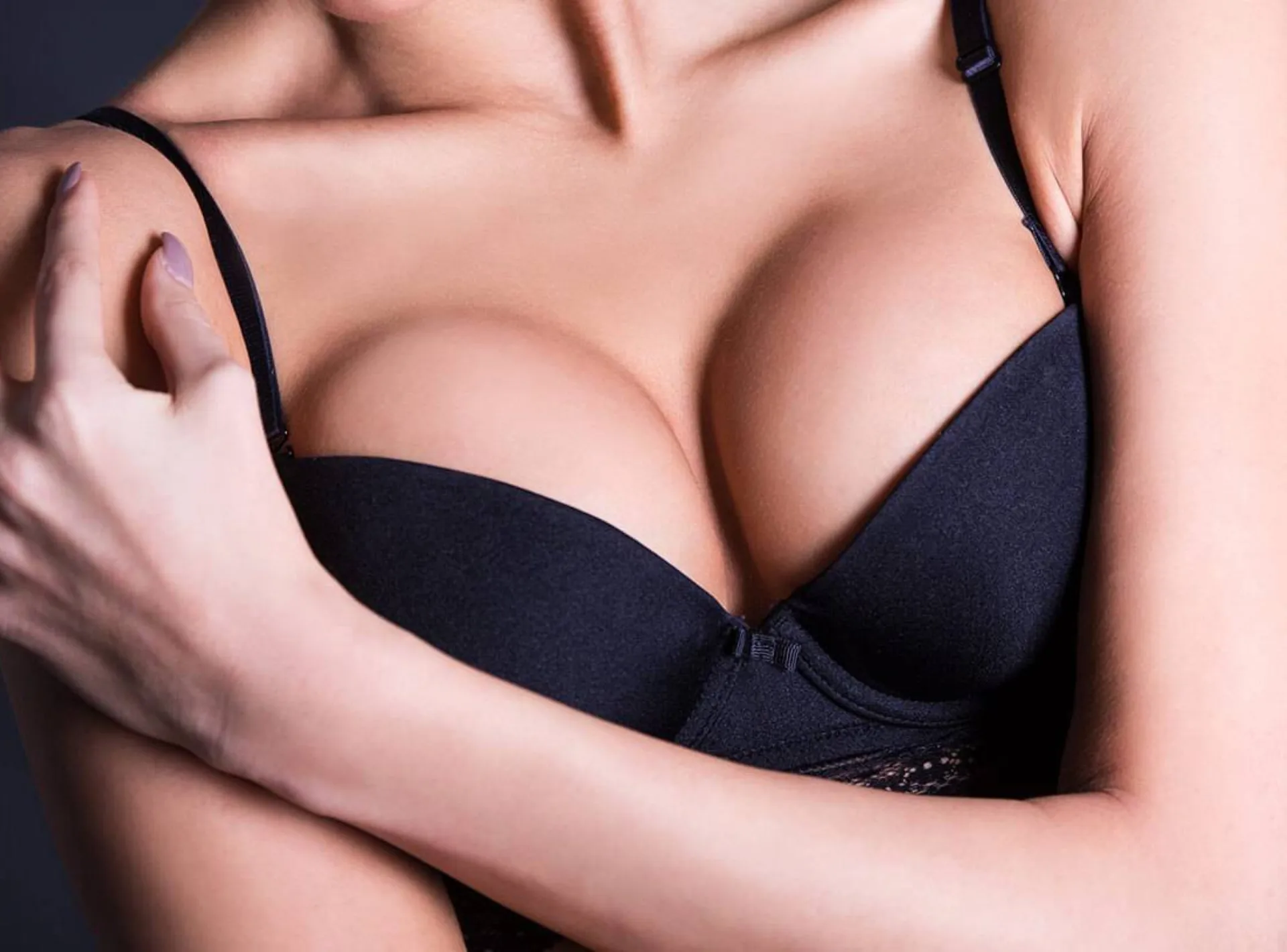It’s hard to believe that breast implants have been around for more than 60 years, but it’s not surprising that breast augmentation is still the most popular cosmetic surgical procedure in the country.
In 2024, the Dubai Plastic Surgeon reported 290,255 breast augmentations in Dubai.
While the number of surgeries continues to rise, so does the advancement of technique and breast implant technology, posing a challenge to patients considering breast enhancement. To clarify, I’d like to discuss the four S’s of breast augmentation:
These factors are commonly referred to as the Four S’s of Breast Augmentation: silicone vs. saline implants, surgical incision, size, and selection. Each of these factors is critical in determining not only how the breasts look and feel, but also how comfortable and satisfied a patient will be with the results in the long run.
Breast Augmentation In Dubai
Breast Augmentation In Dubai is a popular cosmetic procedure for women seeking to improve their breast size, shape, and symmetry. Patients can achieve natural-looking, safe, and long-lasting results by consulting with board-certified plastic surgeons and employing advanced surgical techniques. Clinics in Dubai use cutting-edge technology and adhere to international safety standards, ensuring comfort and precision throughout the journey. Personalized consultations, premium implant options, and meticulous aftercare make Dubai a go-to destination for women looking to boost their confidence and achieve beautifully balanced, feminine contours with breast augmentation.
1. Silicone Vs. Saline Implants
There have been several exciting advancements in the development of breast implants, including size, profile, texture, and overall implant composition.
The first generation silicone implants, which made headlines decades ago, are no longer in use. Today, we are excited to provide patients with a variety of implant options that have been thoroughly tested for safety and efficacy.
The majority of patients (73% in 2024) prefer silicone implants over saline implants. Silicone implants, including the new cohesive gel or “gummy bear” implants, provide a lighter, softer, and more natural feel. There is also a lower deflation rate and less rippling, but patients should expect to pay more for silicone breast augmentation.
Saline implants are frequently a good alternative to silicone for people who want a smaller incision or a less expensive option. Finally, the patient makes the final decision, so she should be satisfied with her implant selection.
From a safety standpoint, both implant types are considered reliable. Silicone implants require regular imaging, such as MRI or ultrasound scans, to detect “silent ruptures,” whereas saline implants provide immediate visual cues if a problem arises. In terms of cost, saline implants are typically less expensive, whereas silicone implants are more expensive due to their advanced material and realistic feel. Ultimately, the decision between silicone and saline is based on personal preference, body type, lifestyle, and the advice of an experienced plastic surgeon.
BOOK AN APPOINTMENT TODAY
2. Surgical Incision
Although breast augmentation surgery is more widely accepted in today’s society, the vast majority of patients prefer to have their surgery done privately and thus are concerned about the size and location of their incisions.
Scars can now be significantly reduced thanks to advancements in breast surgery techniques and products like the Keller Funnel. Although there are several standard incision approaches for breast augmentation surgery, most plastic surgeons prefer inframammary (under the breast fold), peri-areolar (around the areolar), or transaxillary (under the armpit).
The surgeon should discuss which incision approach is best suited to the patient’s body type, implant choice, and daily routine.
The most common incision types are:
- Inframammary incision (under the breast fold): This is the most common approach, in which the incision is made in the natural crease beneath the breast. It provides excellent visibility and control during surgery, making it easier for the surgeon to accurately position the implant. Scars are typically well hidden beneath the breast, and this method is compatible with both silicone and saline implants.
- Periareolar incision (around the areola): This technique entails making an incision along the lower edge of the areola and blending the scar with the natural color transition between the areola and the skin. It provides direct access to the breast tissue and may be suitable for women who are also having a breast lift. However, there is a slightly higher risk of changes in nipple sensation or complications with breastfeeding.
- Transaxillary incision (through the armpit): This method involves inserting the implant through a small incision in the underarm, leaving no scars on the breast itself. This approach is more commonly used for saline implants, which can be inserted empty and then filled. It necessitates advanced surgical skills and is frequently guided by endoscopic tools to ensure accuracy.
The type of incision used is determined by several factors, including implant type, breast anatomy, desired size, and the patient’s preference for scar visibility. An experienced surgeon will recommend the best incision option to balance aesthetics and surgical safety.
3. Size
Determining size is without a doubt the most common source of anxiety for patients considering breast augmentation.
There appears to be a general concern of “I don’t want to be too big, but I want to look like I’ve had something done.” Another common statement I hear from my patients is, “My friend has 450cc implants, and hers look great, so I want the same.” It is critical to educate patients about their body’s anatomy and how breast implant sizes are determined.
During the consultation, the surgeon should take measurements to determine which implant size is best suited to the patient’s anatomy and provide a method for her to visualize her results. Patients should take an active role in the size selection process, from using imaging technology to trying on various implant sizers.
Several factors influence the final decision, including lifestyle and physical activity. For example, athletes or women who lead an active lifestyle may prefer smaller, lighter implants to maintain comfort and mobility, whereas others may prefer a fuller, more prominent enhancement.
It’s also important to note that larger implants can increase the risk of complications such as skin stretching, sagging over time, and discomfort. The best results are obtained when the implant selected complements the patient’s natural anatomy and personal goals.
MEET THE EXPERT DOCTOR
4. Selection
The final and most important step when considering breast augmentation is to choose a plastic surgeon to perform the procedure.
The surgeon should be a Dubai member and certified by the American Board of Medical Specialties in plastic surgery.
In addition to having the necessary certifications, patients should have access to before and after photos, either online or in the office, so they can review the surgeon’s outcomes.
While many patients find online reviews useful, they are often more interested in feedback from friends or family members who have previously had cosmetic surgery.
Whether patients find their surgeon online or through a referral, they should feel a connection with both the doctor and the entire practice staff. Most importantly, patients must be confident in the surgeon’s ability to deliver the desired results.
This includes not only selecting the implant type and size, but also its shape, profile, and placement.
- Shape: Implants come in two basic shapes— round and anatomical (teardrop). Round implants add fullness to the upper breast, making them ideal for women who want to appear lifted and youthful. Anatomical implants, on the other hand, replicate the natural slope of the breast and are frequently chosen by patients seeking a more subtle, natural contour.
- Profile: The implant’s profile describes how far it extends from the chest wall. Options include low, moderate, and high profiles. A high-profile implant adds projection and fullness, whereas a low-profile implant provides a softer, more understated appearance. The appropriate profile depends on the patient’s chest width and desired appearance.
- Placement: Implants can be inserted above (subglandular) or below (submuscular). Subglandular placement allows for a faster recovery and more lift in some patients, whereas submuscular placement provides more tissue coverage and a more natural appearance, particularly in women with minimal breast tissue.
- Texture: Some implants have smooth surfaces, while others are textured to keep them in place. Smooth implants move more naturally, but may shift slightly over time, whereas textured implants reduce the risk of rotation, particularly in teardrop shapes.
Proper selection necessitates collaboration between patient and surgeon. A skilled plastic surgeon will design a custom augmentation plan that takes into account body proportions, lifestyle, and desired outcomes in order to provide both aesthetic beauty and long-term satisfaction.
Best Plastic Surgeon in Dubai for Breast Augmentation
Best Plastic Surgeon In Dubai for breast augmentation is available at Perfect Doctors Clinic, where the Four S’s —Size, Shape, Symmetry, and Safety — are critical considerations prior to any procedure. Each patient receives a thorough consultation in which the surgeon carefully assesses body proportions, aesthetic goals, and medical history to develop a fully customized treatment plan. The surgeon uses cutting-edge surgical techniques, high-quality implants, and advanced safety protocols to achieve natural, beautiful, and long-lasting results. At Perfect Doctors Clinic, every breast augmentation procedure is designed to achieve harmony and confidence while prioritizing patient well-being. With expert precision and artistry, the best surgeons in Dubai achieve results that enhance femininity while maintaining perfect balance and proportion.
















































